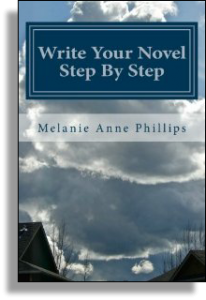Dramatica asks 12 Essential Questions every author should be able to answer about his or her story. Four deal with the Main Character, four with Plot, and the remaining four with Theme.
The first of these questions is Main Character Resolve, and asks:
By the end of your story, has the Main Character “Changed” or remained “Steadfast?”
Traditionally, it has been taught that a character must change in order to grow. This is not actually the case. A character may grow in his resolve. For example, Dr. Richard Kimble in The Fugitive never changes the nature of his character. Rather, he redoubles his resolve in order to cope with the increasing obstacles placed in his path.
There is a character in The Fugitive who DOES change, however, and that is Sam Girard, the Tommy Lee Jones character. At the beginning of the story, he tells Kimble, “I don’t care,” when Kimble says that he didn’t kill his wife. At the end of the story, Girard comes to believe in Kimble’s innocence, removes Kimble’s handcuffs and offers him a compress to ease the soreness they caused. Kimble says, “I thought you didn’t care…” Girard replies with gentle sarcasm, “I don’t,” then adds, “Don’t tell anybody…”
Girard is the Obstacle Character to Kimble’s Main. For every Main and Obstacle character, one will change as a result of the others steadfastness. In essence, because Kimble cares so much (as evidenced by the many people he helps even when on the run) Girard changes his nature and begins to care himself.
Another example of this can be found in the James Bond film, “Goldfinger.” In this story, Bond remains steadfast but someone does change. Again, it is the Obstacle Character, Pussy Galore (the Honor Blackman part) who runs the Flying Circus. She changes her mind about helping Goldfinger, spills the beans to the CIA and changes the gas canisters from poison to harmless oxygen. It was Bond’s resoluteness, which eventually leveraged her to change.
Examples of Change Main Characters are Scrooge in A Christmas Carol, Luke Skywalker in Star Wars, and Chief Brody in Jaws. In the case of Scrooge, he ultimately makes a conscious decision to change the very foundations of his nature. In contrast, Luke only changes a small aspect of his nature – at the crucial moment he decides to trust the Force (in effect to trust his own abilities, himself) and is therefore able to win the day. Other than that, Luke remains pretty much the same personality he was before. Finally, Chief Brody is afraid of the water and won’t even wade into it. But, after defeating the shark, he has a conversation with Hooper as they swim back to shore. He says, “You know, I used to be afraid of the water.” Hooper replies, “I can’t imagine why.” Brody has also changed, but not by conscious decision, more by attrition. In a sense, Brody has BEEN changed by his story experiences. So, we can see that Change may be universal (Scrooge), specific (Skywalker), or unintentional (Brody).
When a character must make a conscious (active) decision to change, regardless of whether it is his whole personality or just an aspect, it is called a Leap of Faith story. When a character IS changed by the story experience without an active decision, it is called a Non Leap of Faith Story. Both kinds of Change are equally sound dramatic structures, but each creates a different feel over the entire course of the story.
It is important to recognize that Change may lead to success if it is the right choice, or it may lead to failure if the character should have remained Steadfast. Similarly, remaining Steadfast may lead to a positive or negative conclusion.
Also, characters may flip-flop over the course of the story, changing for a while and then changing back. Or, they may grow closer and farther from changing as their experiences proceed. But in the end, the character will be the same person, albeit older and wiser, or they will have some fundamental trait of their character altered, large or small, for better or worse. Regardless of the propriety of the outcome, if the character is different in nature he has changed. If he is the same, he has remained Steadfast.

 Write Your Novel Step by Step
Write Your Novel Step by Step
